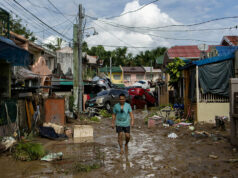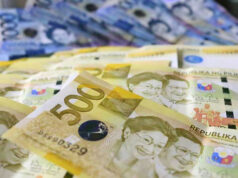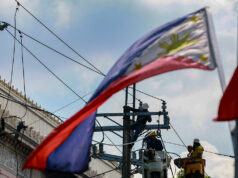Politics and Crisis: A discussion seriesCOVID-19 Lessons in East Asia: The good, the bad, and what’s just right
By The Ateneo de Manila Department of Political Science
Part 5 of an eight-part series
AMID the global disruptions caused by the pandemic on all economies, attention is drawn to how countries in East Asia respond to the crisis. Which of their responses account for relative success or failure? The regional effects of the COVID-19 pandemic suggest that wealth and level of development do not guarantee effective governance. An openness to innovation and feedback (plus the ability to creatively and inclusively implement working recommendations), however, seems to do better.
As the region moves gradually towards eventual stability, it is instructive to examine the role that East Asian socio economic and political governance will influence the emerging post-pandemic international order. They serve as effective cases not only on pandemic management, but also on the changing nature of the needs of contemporary Asia-Pacific citizens, and how governments should adjust to them — not the other way around.
BEIJING AS ‘PATIENT ZERO’
Significant criticism must rest squarely on the non-transparent, obfuscating governance and international relations China under the Communist Party (CCP) has engaged in. Despite warnings and initial cases sounded within Wuhan, China as early as December 2019, local authorities and the CCP insisted in downplaying the purported risks of the disease. The most damaging would be its continued refrain that virus transmission is not possible between humans — despite mounting evidence to the contrary. The World Health Organization (WHO) was also party in disseminating this inaccurate information throughout January 2020.
Perhaps it was inevitable that China’s aloofness from engaging in genuine multilateral cooperation led to this debacle. Even at this very moment, Beijing directs Chinese responses to the pandemic to portray itself as a “savior” and “emerging global leader” — not the main party responsible. Unequal treaties and trade influence with its partners (within and outside Asia Pacific) continues to mute criticism and attempts at accountability. Continued Chinese activity within contested territories (such as Taiwan, Senkaku/Diaoyu Islands and the West Philippine Sea) do not help matters.
SOUTH KOREA LEARNS FROM THE PAST
South Korea’s extraordinary response in battling COVID-19 may appear characteristically intrusive to some, but the pre-emptive, transparent, and immediate measures it has adopted to curb the spread of the virus deserve the attention of policymakers and leaders worldwide. As a democracy, it shied away from putting its cities under lockdown — but was decisive enough and acted swiftly upon determining its first confirmed cases. Bold efforts were directed towards immediately addressing two variables critical in slowing the virus: quarantining and high-volume testing campaigns.
In mid-January, as soon as the ugly reality surrounding the virus became known to the government, agencies with knowledge and experience in infectious and pandemic diseases were mobilized to roll out rigorous quarantine mechanisms and nationwide testing. South Korea’s robust research and biotech industries raced to produce testing kits for testing centers. Beyond conventional testing centers, drive-through testing stations were set up around the country, allowing faster determination if one needs treatment. Such innovative and expansive strategies means more people are tested per million, without compromising speed nor overwhelming other conventional centres. As of April 10, South Korea had conducted 503,051 tests (Worldometer) against a population of more than 51 million people. The numbers do not effectively translate to a categorical win, but are effective in isolating infected individuals and tracing their contacts for quarantine.
Established quarantine guidelines inform the public of the stakes involved with violations. They run risks of getting slapped with a ₩3,000,000 ($2,500) fine if their designated two-week self-quarantine period is breached. Harsher penalties include deportation for foreigners and jail time for citizens (Reuters).
South Korea’s zero tolerance for anyone violating protocol is tempered by the support of a local monitoring team who checks on individuals and delivers government-subsidized supplies.
South Korea leverages on the hard lessons it learned from the Middle East Respiratory Syndrome (MERS) in 2015 and the SARS epidemic in 2003 to effectively implement quarantine and testing measures against COVID-19. At the same time, its model stands out due to a bold display of political will, carried out in swift and decisive actions. Protocols are also well-established, leaving no gray areas of interpretation.
JAPAN’S TENTATIVENESS BREEDS ANXIETY
When the Diamond Princess cruise ship returned to Yokohama port on Feb. 3 (days after its quarantine clearance was invalidated in Hong Kong), no one anticipated a month-long wait before the last crew members of the 3,711-passenger ship would eventually disembark. Keeping the passengers on board was heavily criticized as inhumane and medically unsound. Healthy passengers were made to remain in the infected vessel, causing an infection spike within two weeks, from ten people to more than 700. The cruise ship became an incubation place for the virus, exacerbated by the lack of hygiene protocols and poor isolation mechanisms. Dr. Norio Ohmagari of the National Center for Global Health and Medicine later called the decision “imperfect” (CNN, 2020).
On March 24, Japan did the inevitable and officially postponed the 2020 Tokyo Olympics to next year. Soon after, the number of COVID-19 cases rose drastically, prompting Prime Minister Shinzo Abe to put Tokyo, Osaka, and five other “virus hotspot” prefectures in a state of emergency from April 7. Ten days later, it was expanded to cover the entire nation. While it is not a total lockdown, the state of emergency has put a sense of urgency in the government’s last minute efforts. Furthermore, last April 9, the Japanese government announced a proposed stimulus package ($993-billion worth) that would allow for each Japanese citizen to receive a ¥100,000 ($1,300) cash handout (Kyodo News, 2020). Of major interest is an earmarked $2.2 billion proportion, slated to supporting Japanese multinational companies to relocate out of China.
Marooning the Diamond Princess and the painfully slow decision to postpone the Olympics were not lost on the public’s eye. In a nationwide survey (Kyodo News, 2020) released on April 13, 80.4% of the respondents felt the declaration came too late. This is compounded by the poor comparison to South Korea in terms of COVID-19 testing. From February till late March, Japan only tested about 50,000 people, compared to South Korea’s 250,000 by mid-March. Selective and slow testing aggravated peoples’ quiet discontent to the perceived tone-deaf response by the Abe administration.
TAIWAN REAPS ‘EARLY BIRD’ REWARDS
Taiwan’s winning fight against COVID-19 is remarkable. It recorded its first infections in January and almost three months later, its 393 confirmed COVID cases are recorded as the lowest per million people. As of April 16, it has six deaths and no new record of confirmed cases. Taiwan’s foresight when it decided to prepare early for a possible human-to-human infection is merited, in contrast to other governments which were either still in a state of denial or dilly-dallying.
As early as January, Taiwan already introduced exhaustive measures that would allow them to block the spread of the virus. After filing a report with the World Health Organization (WHO) and not receiving any response in return, Taiwan went ahead with screening for infections, contact tracing, and enforcing strict quarantine. Borders were closed, particularly from mainland Chinese tourists.
Taiwan’s defensive preparation against the virus is strongly hinged on its negative experience during the SARS outbreak in 2003 (which resulted in 181 deaths [Chen, 2005]). This gave Taiwan leverage as it deals with newer cases of epidemics with more political will, transparency, and decisiveness.
Emergency units such as the Central Epidemic Command Center (CECC) — put in place to address past epidemics — help provide the government direction on how to proceed swiftly. The CECC also adopted action plans recommended by The Journal of the American Medical Association (2020), such as border control, travel restrictions, resource allocation, and communication.
Digital governance also played a critical role in the Taiwanese government’s response to the virus, something rarely highlighted in the approaches of other governments. Using big data and available technology, popular applications allowed the government to make useful apps that track local mask supplies and create databases that identify vulnerable groups for monitoring.
THE ROAD TO ECONOMIC RECOVERY (?)
The World Bank’s Regional and Economic Update for East Asia and the Pacific this month has projected that “the growth outlook for the region in 2020 has been sharply downgraded.” With trade and access to goods inconsistently maintained or protected throughout the region’s nations, we can expect significant downturns in peoples’ financial stability, quality of life and productivity. It is reasonable to assume that their ability to recover from such will be dependent on the kind of social and economic protection structure governments have instituted for the past decades.
Two concerns face Asia Pacific nations in moving forward from this crisis. First, they need to assess the ability of their societies to bounce back and rebuild economies from lost productivity. Second, they have to decide whether such “bounce backs” rely on restoring old economic ties or inventing new ones. With the reality of globalization, nation-states cannot execute their plans in a vacuum. Geopolitical tensions within the region will continue to color economic policy-making.
China’s status as Asia’s main global industrial hub still relies on multinationals setting up shop there, despite cultivating competition-ready brands. The movement of Japanese (as well as other countries’) investments away from China heralds a rebalancing of regional economic activity. Potential new destinations for such capital flight would be Vietnam, Thailand, Cambodia, Indonesia, and Bangladesh — whose economies are at a suitable level of industrialization and upgraded infrastructure. Such redistribution of investments can help in the development catch-up of the aforementioned target economies along more sustainable and accountable directions.
The implications of such capital flight, however, tend to bring up alarm bells for those following human development trends of the past century. Luring capital almost always involves governments of the destination countries lowering quality assurances, health and safety standards, and labor rights — guaranteeing inequitable population development.
Addressing this is only possible by upholding international standards (plus the existence of political institutions and groups willing to lobby for such standards). While this opens opportunities for trans- and multinational cooperation to address regional economic catch-ups, this does require a level of reassessment and re-engagement between Asia-Pacific regional bodies and their neighbors.
TOASTING DEMOCRATIC SOLUTIONS
Social protection via political struggle, however, carries its own dilemmas. Naomi Klein’s 2007 book The Shock Doctrine forcefully exposed, a.) how governments used crises in order to implement policies that would otherwise meet opposition; and, b.) the practice of “disaster capitalism”: exploiting disastrous situations in order to unjustly profit the private sector. These practices are making a comeback in the region.
Human Rights Watch (HRW) sounded the alarm, together with global media, on how many governments took the COVID-19 crisis as an opportunity to centralize powers and use it to silence all institutions guaranteeing transparency, accountability, and democracy. The biggest offender, not surprisingly, is China. It remains intransigent, non-transparent and bare-facedly dishonest in its handling of the crisis — while also seeking to expand its territorial and economic influence further.
The Asia-Pacific region of course has home-grown authoritarian regimes following the Chinese model. Thailand and Cambodia have cracked down on critics/dissidents against government responses to the crisis. The Philippines, for that matter, already ranked in Deep Knowledge Group’s data research as the 9th riskiest country in the world to be in and the least-safe in the Asia-Pacific region. Yet its government under Rodrigo Duterte continues to focus on ineffectual draconian posturing — and calls for the sacking of Health Secretary Francisco Duque III are still met with resistance.
In contrast, the countries figuring among the safer ones (South Korea, Taiwan, and Hong Kong) demonstrate democratic credentials by maintaining transparency and rapid response structures between government and people. The centrality of adopting mass testing policies, innovating on new governance technologies, as well as maintaining a cooperative (instead of wholly draconian) stance with its vulnerable peoples guarantees better coordination, obedience, and achievement of objectives.
The delegitimation of authoritarian/centralized governments (purportedly elected by public mandate to “solve” perceived crises) is a real possibility and opportunity. Yet this needs to be tempered with the reality of increasingly polarized political and civil societies, kept apart by “moral discourse” and prejudicial divides. The pernicious presence of disinformation structures, being deployed by governments to bolster falsified legitimacies and silence dissent also remains intractable.
Most of these recommended actions may indeed be modified by emerging realities, especially as the global curve for COVID-19 cases has yet to significantly flatten. Nonetheless, the reward of electoral victory for good governance has already been shown to be palpable — such as the Democratic Party of Korea’s landslide win in the National Assembly last April 15. The perceived efficacy of democratic governance in crisis management can galvanize pro-democracy forces in authoritarian/flawed democratic countries to mount opposition in upcoming election cycles. It can also motivate the reassessment of long-standing cultural and social assumptions of the compatibility of democratic values and institutions with Asian societies — one that is long overdue.
Previous columns in this series can be accessed here:
• https://www.bworldonline.com/politics-and-crisis-a-discussion-series-governing-the-pandemic/



